Don't Forget About the French Press—It Makes Some of the Best Coffee I’ve Ever Had
It's easy to use, dependable, and affordable.
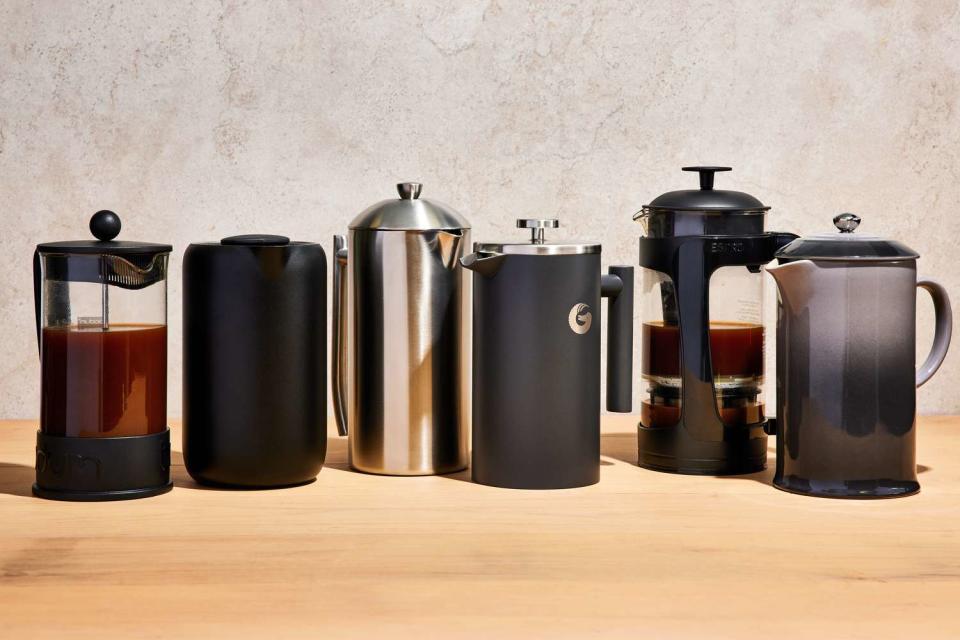
Serious Eats / Victor Protasio
Straight to the Point
Our favorite French press is the Fellow Clara. It has amazing heat retention and brews excellent coffee.
I used to forget about my French press. More often than not, it just sat on my shelf with other forsaken coffee tools, collecting dust. Occasionally, if I happened to run out of filters for my pour-over, I’d bring it down and give it its moment. But it was always the reserve—a backup tool that worked well in a pinch.
But one week, when I kept forgetting to buy new coffee filters, I started playing around with my neglected French press. I looked up a few recipes online and even tested the one Nick Cho wrote about for Serious Eats. Along the way, I realized just how good the coffee brewed by a French press is. What’s more, it’s incredibly easy to use: Pour hot water over freshly ground coffee, let it sit for some minutes, press it, and…that’s it. (Okay, yes, there are a few different methods for making it, but for the most part, the theory stays the same.) This simple process makes a consistently good cup of coffee, and I’ve made a lot of coffee as a former barista.
Fellow Clara French Press
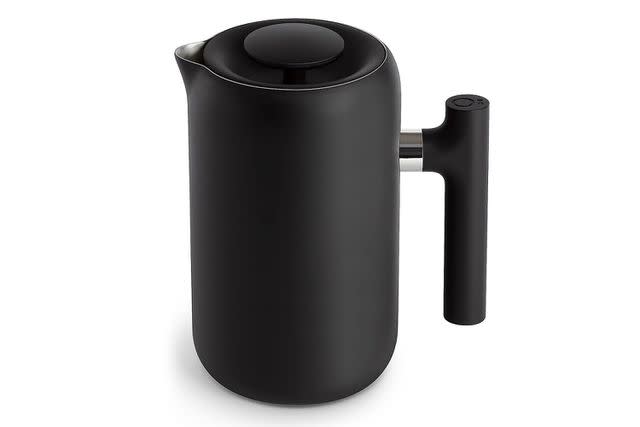
Simplicity Is What Makes a French Press Great
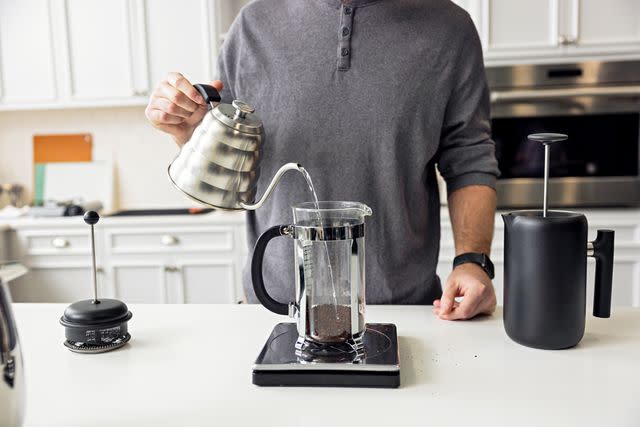
Serious Eats / Isaac Nunn
Since the beginning of what we now call the third wave of coffee, there’s been a strong interest in filter methods. More and more folks are using pour-over brewers like the Kalita or the Hario Switch. There are also new approaches to and ratios for brewing espresso, with people using doodads like this puck screen or a needle tool called a WDT to even out how the water flows into espresso grounds. The hype machine, you could say, is geared toward the world of papers and pressure.
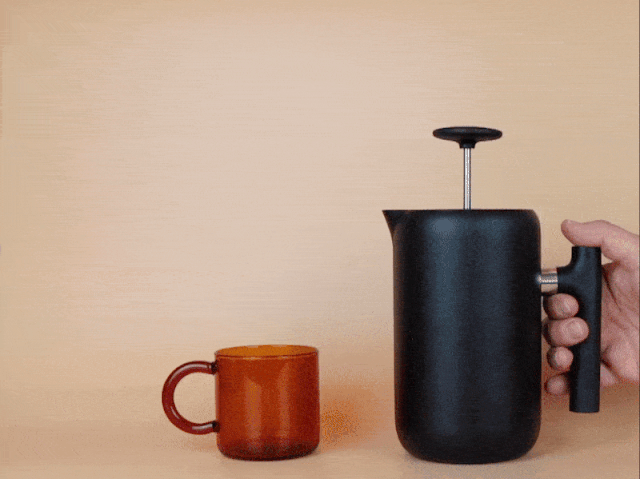
Serious Eats / Jesse Raub
Pouring slowly lets the grit settle into the corner and gives you a cleaner cup.And then there’s the French press. It’s forever faithful, even if you’re the type who loves to tinker with your filter coffee recipe or dial in your at-home espresso. Just bloom the grounds with hot water just off the boil (210˚F, ideally). Let the mixture sit for one minute before breaking up the crust: Stir for 30 seconds, until the crust sinks. Brew for at least five minutes, and up to 10 (a longer brew will result in a bitter cup). Gently plunge until the filter screen rests just below the brewed coffee—don't push it onto the grounds. Pour and enjoy.
A French Press Lets Coffee Oils Shine
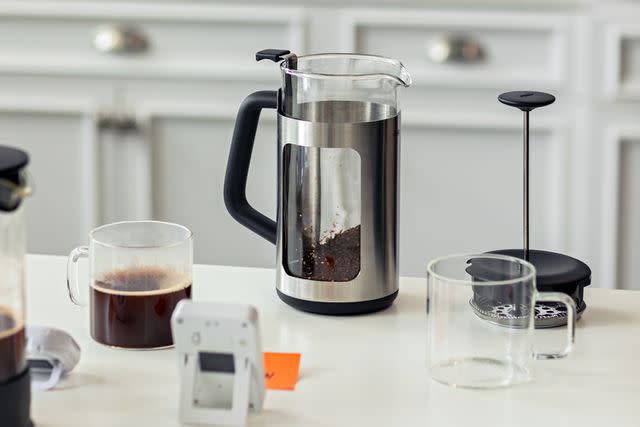
Serious Eats / Isaac Nunn
Unlike a pour-over, in which the coffee’s oils are filtered out, a French press is an immersion brewer (meaning the coffee “steeps” in the water), so the natural oils are left behind, giving the coffee a silky texture. While the oils do take the spotlight away from the beans’ particular flavors, they also result in a rich brew you just can’t get with a pour-over. These oils also smooth out any sharply astringent flavors in light roast coffees and add a buttery sweetness to dark roast brews.
You Can Use a French Press for More Than Just Coffee
Since a French press is so simple, it can be used for more than just coffee. I’ll often use it to brew a simple, flavorful cup of tea with some good herbal looseleaf since it strains the leaves nicely. And since I don’t have an espresso machine, if I’m craving a foamy drink, I just make coffee in a moka pot, then heat up some milk and give it a few pumps in the French press. It’s not the silkiest froth, but I find it makes for a fine, thick cappuccino.
FAQs
How do you brew with a French press?
Begin with water that's just off the boil: 210˚F is ideal. Pour the water over the grounds in the French press in a 1:15 ratio (for example, 40 grams of coffee to 600 grams of water). Let the grounds bloom for one minute as the coffee forms a crust at the top. Gently break up the crust, stirring for 30 seconds, until the crust sinks. Steep the coffee for at least five minutes, then gently plunge. Pour and enjoy.
Don’t French presses break a lot?
They do! But that’s often the result of misusing the tool. If you feel any sort of resistance at all while you’re pressing the coffee down, stop, pull the pump up slightly, and try again. I avoid pushing the plunger all the way down and instead, leave the press just above the saturated grounds. If you don’t press the plunger, you won’t disturb the grounds, giving your brew more clarity and resulting in less gunk at the bottom of your cup.
What kind of coffee should I use?
Any kind! Just make sure you know what water temperature is best for the coffee variety you’re using. Of course, the water will cool off the longer you steep the French press, but that doesn’t change the fact that the water should be at its ideal temperature when it first touches the grounds. If it’s too hot, you could end up burning the coffee and having bitter flavors in the final cup, even though some of the natural oils will help even these out.
Why We’re The Experts
Cole Hersey has been a full-time barista for the past five years.
He very much enjoys using his French press to brew a simple, consistently good cup of coffee.
Cole is also a freelance writer focusing on food culture and environmental issues in the Bay Area.
Read More: The 3 Best French Presses, According to Our Extensive, Caffeinated Testing
Read the original article on Serious Eats.

